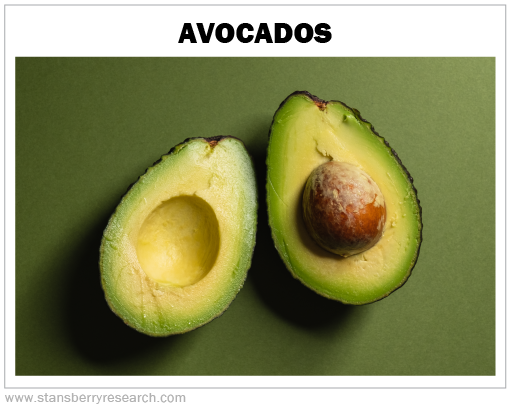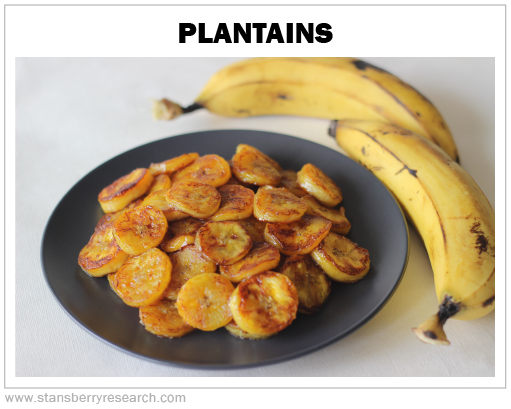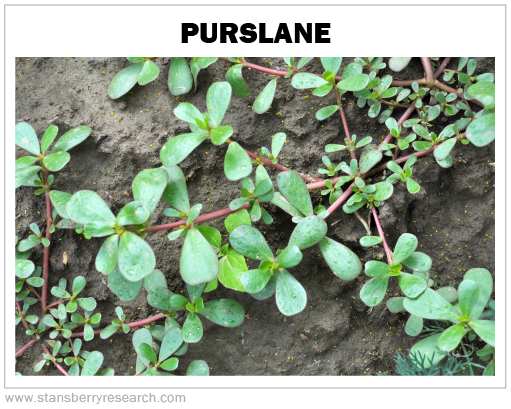Fat – unfairly – has a bad reputation.
It's associated with being unhealthy, unnecessary, and something to be avoided.
But not all fat is bad... We need fat in order to survive.
Our bodies use fat as energy, insulation, and padding to protect our organs. Fat helps the body store important fat-soluble vitamins (A, D, E, and K) for later use. Fat helps our cells grow. It helps our wounds heal. It helps our bodies make hormones. It supports the retina and makes our eyes work. Essential fatty acids – like omega-3s – are necessary for building our brain structures. In fact, 60% of the average adult brain is fat.
Without fat, we can't function.
We just want to stick to the unsaturated variety... Monounsaturated and polyunsaturated fats are the ones to choose when it comes to healthy eating. We should eat fewer saturated fats (many foods have both saturated and unsaturated). And we should avoid trans fats like the plague... They're mostly found in highly processed food.
So make sure you're eating plenty of healthy fats – every day – to optimize your health.
The 2015 to 2020 Dietary Guidelines for Americans recommend total fat be 20% to 35% of daily calories. Saturated fat should be just 10% or less of your daily calories.
Now, I'm not usually one for calorie counting, but this is easy to keep track of if you base it off of a 2,000-calorie diet... Keep total fat to 44 to 78 grams per day and limit saturated fat to 22 grams or less per day.
And a great way to get fat is from eating plants.
Studies show folks who enjoy eating fats from plants (specifically polyunsaturated) are healthier than those who get the majority of their fat from animal products... and are 12% less likely to experience a stroke.
The Fatty Plants You Should Be Eating
Sometimes identifying fatty plants can seem obvious. But I'm willing to bet that some of the items on this list might surprise you. Here are my top five picks for fatty plants...
Avocados
Avocados might make you think of millennials eating them daily on toast, but there are good reasons to have them in your diet. They're known to help improve vision, prevent osteoporosis, and improve cholesterol level due to their dense nutritional content.
At a whopping 22 grams of fat per serving, avocados are the rock stars of all the fatty plants. Of that 22 grams, 15 grams are monounsaturated, 4 grams are polyunsaturated, and 3 grams are saturated. Other nutrients include 10 grams of fiber and 3 grams of protein. Eat just two medium-sized avocados per day (not difficult to do), and you'll reach your total daily fat needs.
Plantains
Plantains are a starchy tropical fruit in the banana family. They look like bananas. But unlike bananas, plantains need to be cooked before they're eaten. So they're typically fried, which makes the edges nice and crispy.
Plantains are high in fiber, vitamins, and minerals. Studies show that plantain phytonutrients reduce cardiovascular risk, support immune function, and improve mood.
Plantains are rich in fat, packing 11.8 grams of fat in a green plantain and 7.5 grams of fat in a yellow plantain. Four green or six yellow is enough to satisfy all your daily fat needs. Though you probably won’t eat that many.
Olives/Olive oil
Olives are a big part of my favorite diet – the Mediterranean diet. I've said before that I could imagine a doctor writing a prescription for a daily dose of olive oil. Studies show that olives are good for the heart, support bone health, and protect against cancer.
Olives contain 10.7 grams of fat per 100-gram serving (about 25 olives). Extra-virgin olive oil has 14 grams of saturated fat and 78.3 grams of unsaturated fat in a 100-gram portion. Consume four servings of olives (about 100 olives) or 7 tablespoons of olive oil, and you'll have met your daily fat needs.
Edamame
The first written record of edamame comes from China, around 200 B.C.E., where the beans were used medicinally. Eventually China introduced edamame to Japan, and they became wildly popular there.
Edamame is high in fiber and contains soy protein. It's good for your heart and can reduce your low-density lipoprotein ("LDL") cholesterol (the "bad" kind). Edamame makes a great snack for folks with diabetes because it slows sugar absorption and prevents blood-sugar spikes. And its high levels of soy isoflavones – which act like "natural estrogens" in the body – may be protective against certain cancers and osteoporosis, and they can relieve symptoms of menopause.
Cook just one cup of edamame for 8 grams of fat. So just about five servings are needed per day to satisfy your daily fat needs. And nearly half of that (3.4 grams) is polyunsaturated fat. One serving of edamame also has a modest amount of omega-3 fatty acids and a single gram of saturated fat.
Purslane
This is one plant some of our readers might be unfamiliar with... Purslane is a common weed that grows all over the world. And while it's eaten throughout Europe, Africa, and Asia, it's not found for sale in many stores in the U.S. If you want to add purslane to your diet, it's easy to grow, and you can sometimes find it at a farmers market.
Purslane has less than 1 gram of fat per cup, but it's much higher in omega-3 fatty acids than other greens.
Omega-3 fatty acids are essential fats that we get from our diets.
It contains both alanine ("ALA") and eicosapentaenoic acids ("EPA"), which are omega-3 fatty acids typically found in meat, fish, soy, and dairy. Purslane contains five to seven times more ALA than spinach does.
Purslane is also high in many nutrients like beta-carotene, vitamin C, magnesium, manganese, potassium, iron, and calcium. It tastes slightly sour and salty, like spinach or watercress. It can be eaten raw or cooked. And a 100 gram (3.5 ounces) portion is just 16 calories, so you could eat a truckload of these without consequence.
So eat your fatty plants every day. Do what I do and load your plate with vegetables. I try and fill half of my plate with plants at every meal. It will benefit your life by supporting the health of both your body and brain. You can't live without fat, so it's important to get the right kind...
What We're Reading...
- Something different: Canada has established its first dementia village.
Here's to our health, wealth, and a great retirement,
Dr. David Eifrig and the Health & Wealth Bulletin Research Team
May 30, 2023





